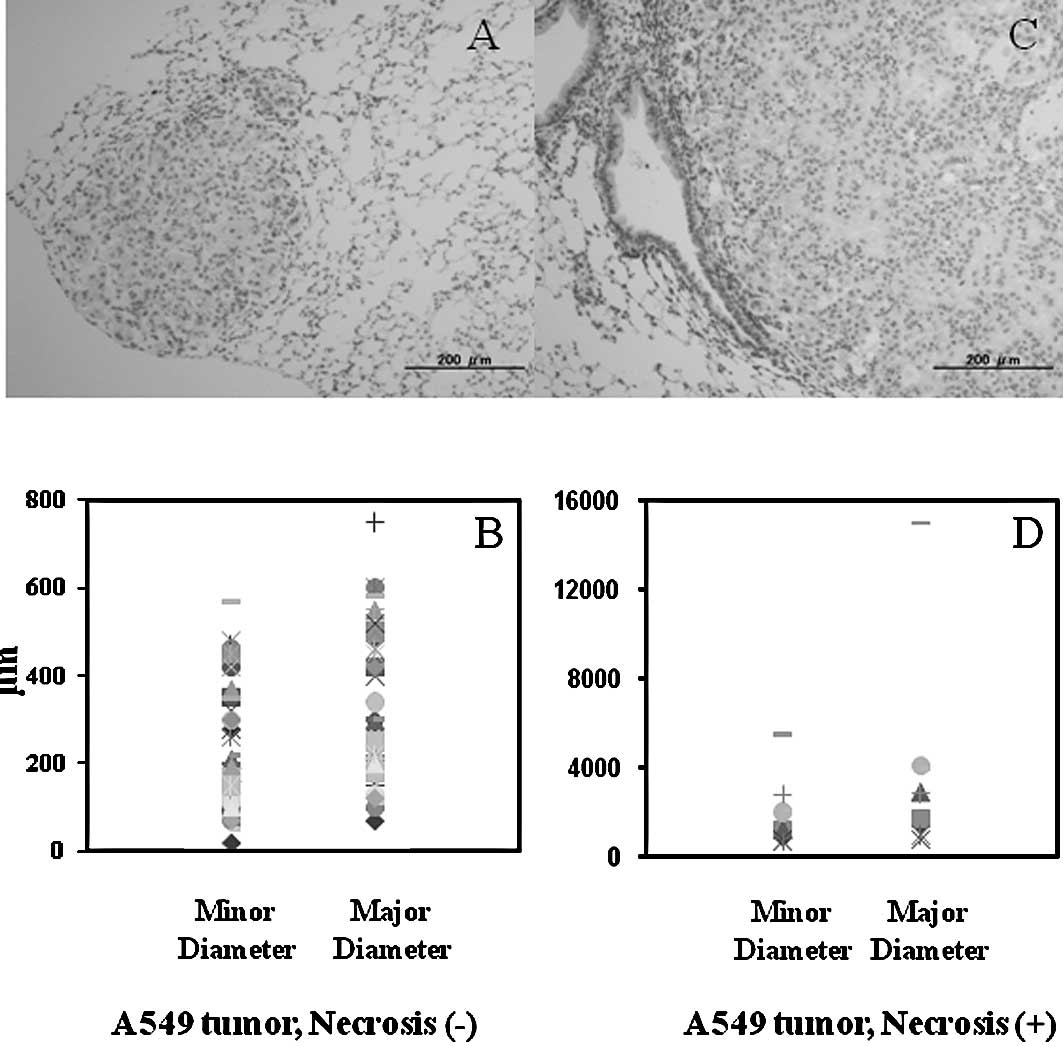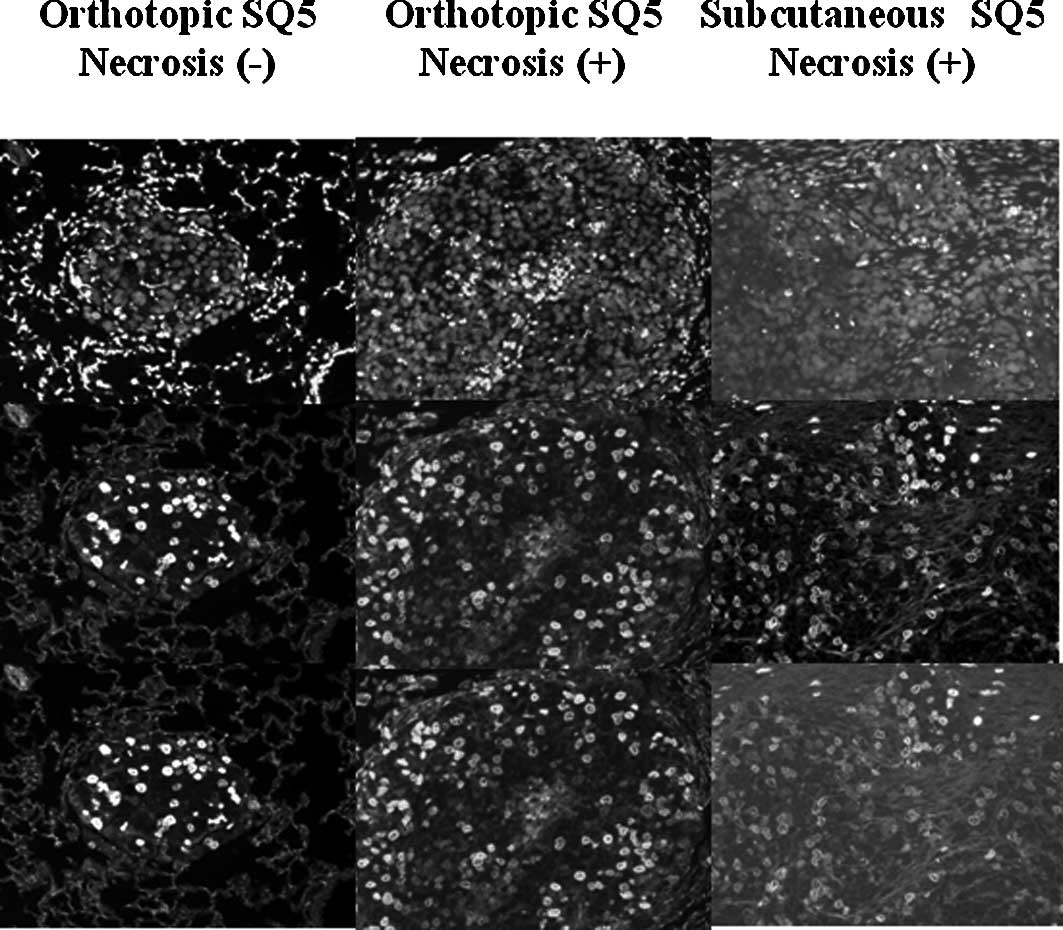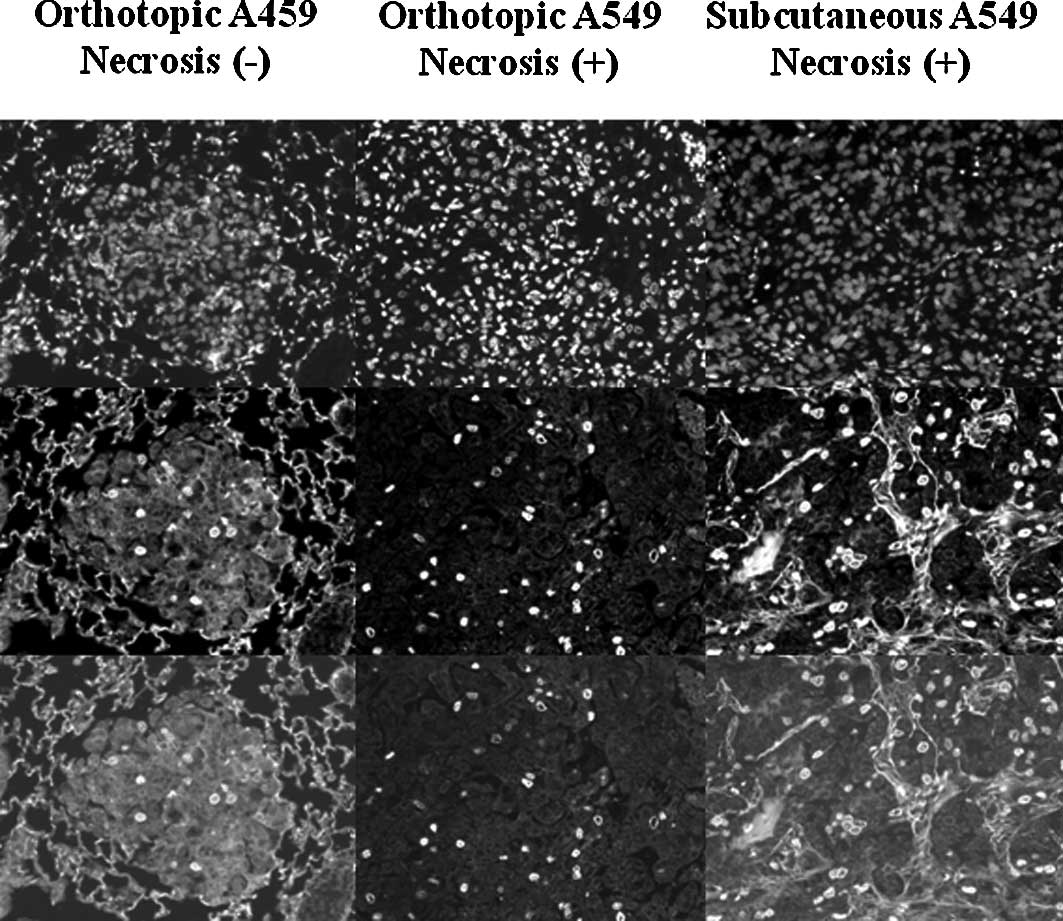|
1.
|
American Cancer Society: Cancer facts and
figures 2002. American Cancer Society; Atlanta, GA: 2002
|
|
2.
|
Vital statistics of Japan, Statistics and
Information Dept., Minister’s Secretarial, Ministry of Health,
Labor and Welfare, 2001.
|
|
3.
|
Onn A, Isobe T, Itasaka S, Wu W, O’Reilly
MS, Ki Hong W, Fidler IJ and Herbst RS: Development of an
orthotopic model to study the biology and therapy of primary human
lung cancer in nude mice. Clin Cancer Res. 9:5532–5539.
2003.PubMed/NCBI
|
|
4.
|
Kuo TH, Kubota T, Watanabe M, Furukawa T,
Kase S, Tanino H, Saikawa Y, Ishibiki K, Kitajima M and Hoffman RM:
Site-specific chemosensitivity of human small-cell lung carcinoma
growing orthotopically compared to subcutaneously in SCID mice: the
importance of orthotopic models to obtain relevant drug evaluation
data. Anticancer Res. 13:627–630. 1993.
|
|
5.
|
Wilmanns C, Fan D, O’Brian CA, Bucana CD
and Fidler IJ: Orthotopic and ectopic organ environments
differentially influence the sensitivity of murine colon carcinoma
cells to doxorubicin and 5-fluorouracil. Int J Cancer. 52:98–104.
1992. View Article : Google Scholar
|
|
6.
|
Fidler IJ, Wilmanns C, Staroselsky A,
Radinsky R, Dong Z and Fan D: Modulation of tumor cell response to
chemotherapy by the organ environment. Cancer Metastasis Rev.
13:209–222. 1994. View Article : Google Scholar : PubMed/NCBI
|
|
7.
|
Camphausen K, Purow B, Sproull M, Scott T,
Ozawa T, Deen DF and Tofilon PJ: Influence of in vivo growth on
human glioma cell line gene expression: convergent profiles under
orthotopic conditions. Proc Natl Acad Sci USA. 102:8287–8292. 2005.
View Article : Google Scholar : PubMed/NCBI
|
|
8.
|
Kang Y, Omura M, Suzuki A, Oka T, Nakagami
Y, Cheng C, Nagashima Y and Inoue T: Development of an orthotopic
transplantation model in nude mice that simulates the clinical
features of human lung cancer. Cancer Sci. 97:996–1001. 2006.
View Article : Google Scholar : PubMed/NCBI
|
|
9.
|
Omura M, Torigoe S, Kurihara H, Matsubara
S and Kubota N: Comparison between fractionated high dose rate
irradiation and continuous low dose rate irradiation in spheroids.
Acta Oncol. 37:681–686. 1998. View Article : Google Scholar : PubMed/NCBI
|
|
10.
|
Terry NH, Brinkley J, Doig AJ, Ma J, Patel
N, White RA, Mahajan N and Kang Y: Cellular kinetics of murine
lung: model system to determine basis for radioprotection with
keratinocyte growth factor. Int J Radiat Oncol Biol Phys.
58:435–444. 2004. View Article : Google Scholar : PubMed/NCBI
|
|
11.
|
Knighton D, Ausprunk D, Tapper D and
Folkman J: Avascular and vascular phases of tumour growth in the
chick embryo. Br J Cancer. 35:347–356. 1977. View Article : Google Scholar : PubMed/NCBI
|
|
12.
|
Lien WM and Ackerman NB: The blood supply
of experimental liver metastases. II. A microcirculatory study of
the normal and tumor vessels of the liver with the use of perfused
silicone rubber. Surgery. 68:334–340. 1970.PubMed/NCBI
|
|
13.
|
Jain RK: Delivery of molecular medicine to
solid tumors: lessons from in vivo imaging of gene expression and
function. J Control Release. 74:7–25. 2001. View Article : Google Scholar : PubMed/NCBI
|
|
14.
|
Leo C, Giaccia AJ and Denko NC: The
hypoxic tumor microenvironment and gene expression. Semin Radiat
Oncol. 14:207–214. 2004. View Article : Google Scholar : PubMed/NCBI
|
|
15.
|
Morishita C, Jin E, Kikuchi M, Egawa S,
Fujiwara M, Ohaki Y, Ghazizadeh M, Takemura T and Kawanami O:
Angiogenic switching in the alveolar capillaries in primary lung
adenocarcinoma and squamous cell carcinoma. J Nippon Med Sch.
74:344–354. 2007. View Article : Google Scholar : PubMed/NCBI
|
|
16.
|
Hwang RF, Moore T, Arumugam T,
Ramachandran V, Amos KD, Rivera A, Ji B, Evans DB and Logsdon CD:
Cancer-associated stromal fibroblasts promote pancreatic tumor
progression. Cancer Res. 68:918–926. 2008. View Article : Google Scholar : PubMed/NCBI
|
|
17.
|
Sun B, Zhang S, Zhang D, Gu Y, Zhang W and
Zhao X: The influence of different microenvironments on melanoma
invasiveness and microcirculation patterns: an animal experiment
study in the mouse model. J Cancer Res Clin Oncol. 133:979–985.
2007. View Article : Google Scholar : PubMed/NCBI
|
|
18.
|
Onn A, Isobe T, Wu W, Itasaka S, Shintani
T, Shibuya K, Kenji Y, O’reilly MS, Fidler IJ and Herbst RS:
Epidermal growth factor receptor tyrosine kinase inhibitor does not
improve paclitaxel effect in an orthotopic mouse model of lung
cancer. Clin Cancer Res. 10:8613–8619. 2004. View Article : Google Scholar : PubMed/NCBI
|













